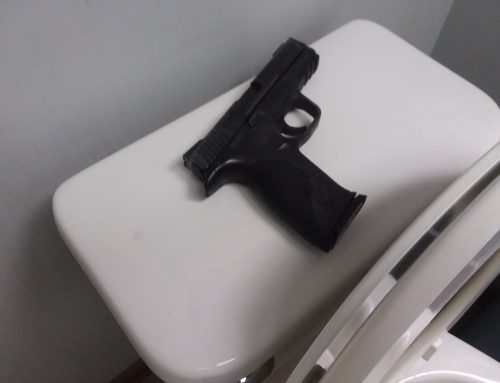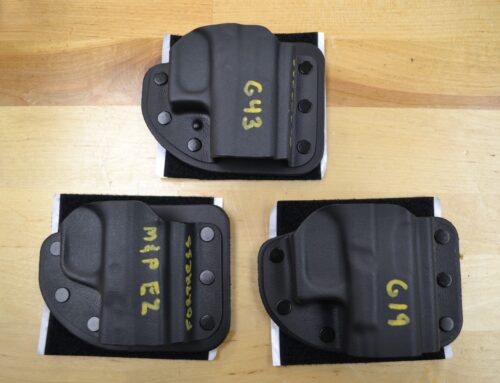The term Zen, derived from the 6th century Chinese word Ch’an, is Japanese Buddhism’s term for personal enlightenment. In a Zen state, a person is at peace with that which they have no control; the advanced state being complete awareness of self without ones self affecting that awareness. Peace, balance.
Many scholars and Buddhists have their own definitions, and, as with most subjects of this nature, it can quickly get convoluted and pretentious. I don’t subscribe to Buddhism as a way of life, but, I take from wherever I can if it helps get the point across – And I apply Zen to trigger manipulation.
When firing a shot from a conventional handgun we’re performing two simultaneous operations – maintaining sight alignment, and pressing a trigger. It sounds simple, but I find it to be the most difficult skill-set confronting students. Why? It comes down to multitasking.
Most of us think we’re really great multitaskers, but we’re not. The best multitasking success story amounts to not totally messing up both things were doing. We’re turning in two (or more) mediocre performances instead of one great one. And when it comes to trigger press, we’re allowed little leeway for failure. Here’s why…
When aiming, our eye(s), rear sight, front sight, and target are all points on a single straight line. We see the target, we bring our sights into that plane, and then make adjustments until our sight picture is transposed over the point of the target we’re attempting to hit. Once we’ve decided to shoot, we make trigger contact and begin to press. In order for our bullet to strike our point of aim, we must maintain our eye/sights/target in alignment through the entire trigger press – if we move the sights off the plane before the primer is ignited, we’re moving the muzzle of the gun off target, which results in a miss. The sighting plane cannot be disturbed as the trigger breaks the shot, and doing so is where 98% of shooting problems begin and end.
It’s not normal for any of us to hold something in our hand while it “explodes.” Guns are loud and they recoil; it’s only natural during a trigger press that we begin to anticipate when the shot will go off – we tense up, attempting to counteract/resist the recoil and “violence” of the gun firing. This, in turn, moves the sights off the plane, which means our muzzle isn’t pointed at the original aiming point as the bullet leaves the barrel, and that means MISS! Our emotions take over, and we’re blessed with failure.
OK, so we’re lousy multitaskers, but we still have to perform two tasks at once – How do we resolve this dilemma? We make a choice to devote our conscious mind to one of two things, either sights or trigger, and we determine which by asking this question: What would we rather know, when the shot is going to fire, or where the bullet is going to go? The correct answer, where it’s going to go. For success, we have to free our mind from the discomfort of “bang”, as well as all the other distractions that accompany the fear of failure.
As we’re taking a shot, if our brain is focused on “oh, this recoil is scary“, “I can’t disgrace the regiment!“, “Who will take care of my cat after I’m gone“, “I’m going to miss this just like last time“, or “I think the gun is going to go off NOW!“, we will yank on our trigger and crash and burn. For the right-hander, your shots will cluster low/left, the mirror opposite will occur for lefties. It’s a condition every shooter displays on one level or another, and goes by many names. Flinching, convulsion, anticipation, in golf it’s referred to as the yips – but it’s all a symptom of the same disease: lack of self-control. As John Franam puts it: It’s a disease we all suffer from. Like diabetes it will never be cured, but we can learn to manage it!
Mastering the trigger requires mastering one’s own emotions. If one is quick to anger, easily offended, or emotionally unstable, consistent marksmanship will remain out of reach. Shooting well is about self-control. In order to control yourself you must first know yourself, and then repent of your old ways.
Running a pistol well is a matter of mechanics and physics – it makes no concession for our feelings. We can’t wish rounds on target; we’ll get nothing from prayer. We’ve spent millions on studies at the most renown learning institutions on the planet, and they’ve concluded that no matter which way we hold our tongue and grit our teeth, no matter how much frustration we stab our pistols at the target with, if the sights move before the bullet leaves the barrel the results will continue to be abject failure!
The key to hits is being at peace with the trigger. The pathway to peace is awareness of sights and detachment from the trigger. As we confirm our sights our minds must be free of all clutter, all distraction…especially the trigger.
To misquote the Buddha: “Do not dwell on the trigger break, do not dream of recoil, concentrate the mind on the sight alignment.”
Zen, and the Art of Shooting.





Leave A Comment
You must be logged in to post a comment.